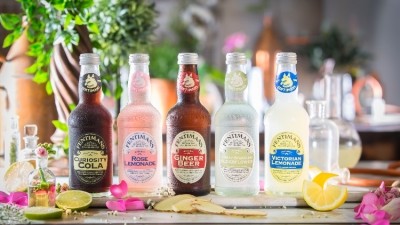The Ultimate Guide to Low and No Alcohol
Low and no: how to sell

So you’ve curated a fabulous selection of non-alcoholic drinks – now, how do you sell them and make a profit?
Your customers will be used to colas, fruit juices and fancy tonics but may be perturbed by a shrub or confused by a kombucha that pours like a pint of beer. The way you market these drinks is crucial.
Before your guest defaults to a lime and soda or a glass of tap water make them aware interesting alternatives.
Make sure they can be seen from the bar and support them at point-of-sale. The offer needs to be visible.
Alcohol-free options should also be on your menu. Having a separate section for them will help customers to find them easily but box them off.
There is even a case for including non-alcoholic cocktails and beers among ‘alcoholic options’, treating them like ‘normal’ drinks.
And don’t forget to list them on your website.
Pricing has always been tricky when it comes to soft drinks. Customers expect them to be cheaper than alcohol but if you’re making an effort, the price should reflect that.
“People don’t want two mixers in a half-pint glass and they don’t want to pay £5.80 for a pint of cola from a gun,” explains Laura Willoughby of mindful drinking organisation Club Soda. “It’s about the experience. If you sell it well, people will pay.”
If you apply the usual soft drinks mark-up to Nonsuch shrubs, for instance, you’ll be charging £7 for a 250ml bottle.
As it is, the highest price Nonsuch founder Henry Chevallier has come across is £5 for a bottle at a premium country dining pub, “and they sell four or five cases a week”.
“A non-alcoholic drink with the drinkability of alcohol requires expensive ingredients, and drinkers can balk at paying for that.”
One rule of thumb is hitting a price point around two thirds of the alcoholic equivalent.
Everleaf alcohol-free aperitif, served in a 1 to 2 mix with soda, is 25% cheaper than an alcoholic spritz and still commands a 70% GP in brand owner Paul Mathew’s own bars.
“It sits between alcoholic drinks and standard mixers,” he says. “We had conversations with customers and they’re willing to pay the price. They understand it’s a carefully produced product.”
How much you can charge for your alcohol-free options depends on overcoming what Willoughby calls “inequality of service”.
“It should be as good as it is for someone drinking alcohol. ”
Laura Clarke, senior marketing manager at All Bar One agrees: “We believe the key is to put the same attention to detail into making alcohol-free drinks as you would a regular alcoholic drink.”
People generally have low expectations of the alcohol-free drinks they can get in a pub. That’s your chance to trade them up to something great.
Nonsuch Shrubs’ Chevallier admits niche, high-end non-alcoholic drinks can be a difficult sell, “but you can offer them a shrub on the basis it will match what they’re eating and make an extra £15 to £20 on that group’s meal.”
Your staff are key to helping customers feel good about ordering a non-alcoholic drink.
“Knowledge and confidence sells,” says Willoughby. “Asking for something non-alcoholic used to be seen as unusual behaviour, but it’s a dietary preference no different to any other.
“Staff should be proud of your alcohol-free drinks and be able to answer questions about them, the sugar content, the calories, and so on.”
Three years in, Ben Branson, founder of alcohol-free spirit Seedlip, declares the education of bar staff and customers “has hardly got started”.
“Other categories are generally understood, at least by staff, but the job we have to do with alcohol-free spirits is unprecedented.
“Staff must feel confident to offer it and educate the consumer about why they’re paying more for it than a standard soft drink, and that’s a priority for us.”





